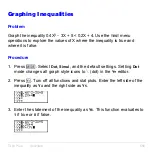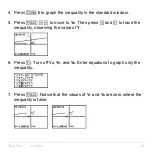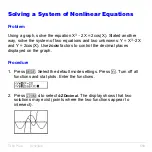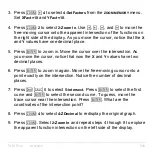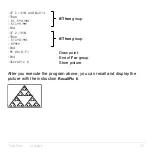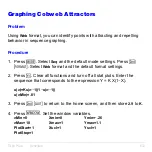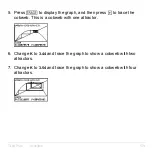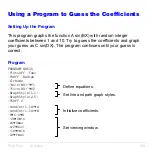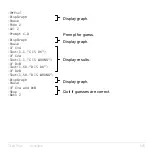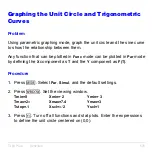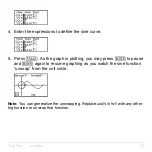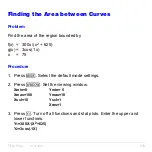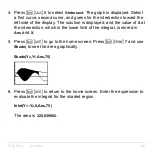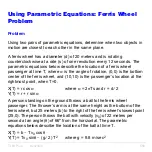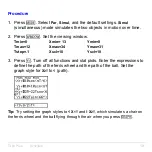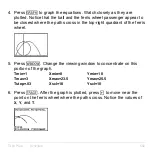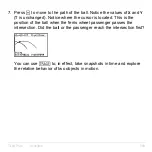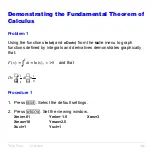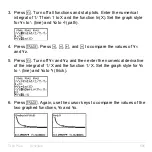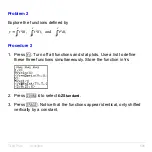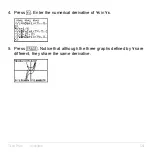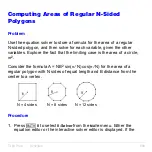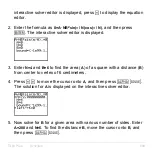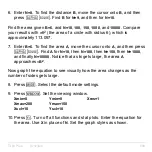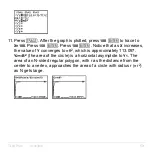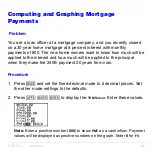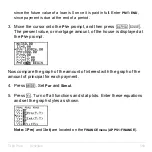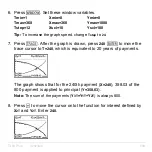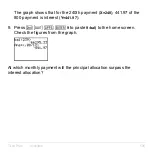
TI-83 Plus
Activities
580
Using Parametric Equations: Ferris Wheel
Problem
Problem
Using two pairs of parametric equations, determine when two objects in
motion are closest to each other in the same plane.
A ferris wheel has a diameter (d) of 20 meters and is rotating
counterclockwise at a rate (s) of one revolution every 12 seconds. The
parametric equations below describe the location of a ferris wheel
passenger at time T, where
a
is the angle of rotation, (0,0) is the bottom
center of the ferris wheel, and (10,10) is the passenger’s location at the
rightmost point, when T=0.
X(T) = r cos
a
where
a
= 2
p
Ts and r = d
à
2
Y(T) = r + r sin
a
A person standing on the ground throws a ball to the ferris wheel
passenger. The thrower’s arm is at the same height as the bottom of the
ferris wheel, but 25 meters (b) to the right of the ferris wheel’s lowest point
(25,0). The person throws the ball with velocity (v
0
) of 22 meters per
second at an angle (
q
) of 66
¡
from the horizontal. The parametric
equations below describe the location of the ball at time T.
X(T) = b
N
Tv
0
cos
q
Y(T) = Tv
0
sin
q
N
(g
à
2) T
2
where g = 9.8 m/sec
2
Summary of Contents for 83PL/CLM/1L1/V - 83 Plus Calc
Page 407: ...TI 83 Plus Inferential Statistics and Distributions 404 Input Calculated results Drawn results...
Page 412: ...TI 83 Plus Inferential Statistics and Distributions 409 Data Stats Input Calculated results...
Page 454: ...TI 83 Plus Applications 451 tvm_FV tvm_FV computes the future value tvm_FV PV PMT P Y C Y...

